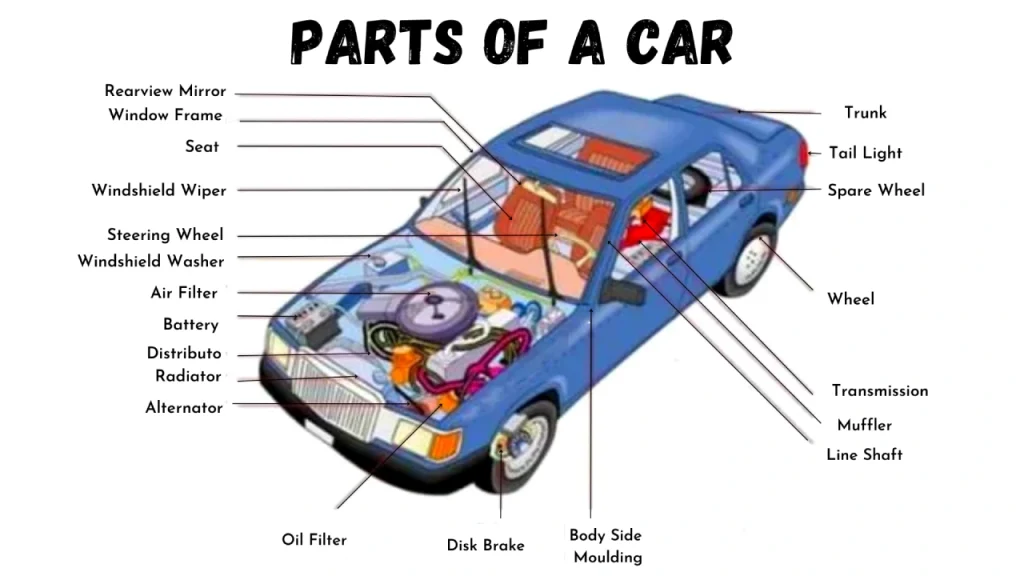The hood of a car, often referred to as the bonnet in some regions, is a crucial component of the vehicle’s exterior. It serves not only as a protective cover for the engine and other essential parts but also contributes to the vehicle’s aerodynamics and aesthetics. In this complete guide, we will explore the various parts of a car hood, their functions, and importance.
1. Overview of the Car Hood
The car hood is the panel that covers the engine compartment. It is typically made from materials like steel, aluminum, or composite materials, designed to withstand various environmental conditions and provide security to the engine components; Understanding the various parts of the car hood can help in maintenance and repair tasks.
2. Main Components of the Car Hood
- Hood Panel
- Hinges
- Hood Latch
- Hood Release Cable
- Insulation Material
- Struts or Springs
- Weather Stripping
- Hood Ornament (if applicable)
2.1 Hood Panel
The hood panel is the primary structure of the car hood. It is the outer part that is visible and painted to match the vehicle’s color. The hood panel is designed to be sturdy yet lightweight, reducing the overall weight of the vehicle.
2.2 Hinges
The hinges are located on either side of the hood. They allow the hood to pivot upwards for access to the engine compartment. Proper functioning hinges are essential for the smooth operation of the hood.
2.3 Hood Latch
The hood latch secures the hood in a closed position while driving. It is designed to prevent the hood from flying open unexpectedly. A secondary latch, often called a safety latch, is also present to provide additional security.
2.4 Hood Release Cable
This cable connects the interior hood release lever to the hood latch. Pulling the lever inside the vehicle pulls the cable, disengaging the latch and allowing the hood to be opened.
2.5 Insulation Material
Many car hoods feature insulation material on the underside to reduce engine noise and prevent heat from escaping into the cabin. This material can also help reduce heat damage to the paint on the hood.
2.6 Struts or Springs
Struts or springs help hold the hood open when it is lifted. They provide the necessary support and ensure the hood remains stable during maintenance or inspections.
2.7 Weather Stripping
Weather stripping is a rubber seal that runs along the edges of the hood. It helps prevent water, dirt, and debris from entering the engine compartment, thus protecting the components inside.
2.8 Hood Ornament
Some vehicles feature a decorative hood ornament as part of their design. While not functional, it can enhance the vehicle’s aesthetic appeal.
3. Importance of Each Component
Each component of the car hood plays a vital role in the overall functionality and safety of the vehicle:
- Hood Panel: Protects engine components and contributes to vehicle aesthetics.
- Hinges: Enable the hood to open and close smoothly.
- Hood Latch: Ensures the hood remains closed while driving.
- Hood Release Cable: Provides easy access to the engine compartment.
- Insulation Material: Reduces noise and heat transfer to the cabin.
- Struts or Springs: Supports the hood when open, preventing it from falling.
- Weather Stripping: Protects the engine from the elements.
- Hood Ornament: Enhances the vehicle’s appearance.
4. Maintenance Tips for Car Hood Components
Proper maintenance of the car hood and its components can extend their lifespan and ensure functionality:
- Regular Inspection: Check the hood for dents, rust, or paint damage.
- Lubricate Hinges: Apply lubricant to the hinges to ensure smooth operation.
- Check Hood Latch: Ensure the latch engages and releases properly.
- Inspect Weather Stripping: Replace any worn or damaged weather stripping.
- Clean Insulation Material: Remove debris to prevent insulation from deteriorating.
5. Conclusion
The car hood is an essential part of a vehicle, housing crucial engine components while providing safety and aesthetic appeal. Understanding the different parts of the car hood and their functions can help car owners maintain their vehicles better. Regular checks and maintenance can prevent issues and enhance the longevity of these components.
Whether you are a car enthusiast or a regular driver, knowing these details can assist you in making informed decisions regarding your vehicle’s care and upkeep. Always consult your vehicle’s manual for specific maintenance guidelines and seek professional advice when needed.

